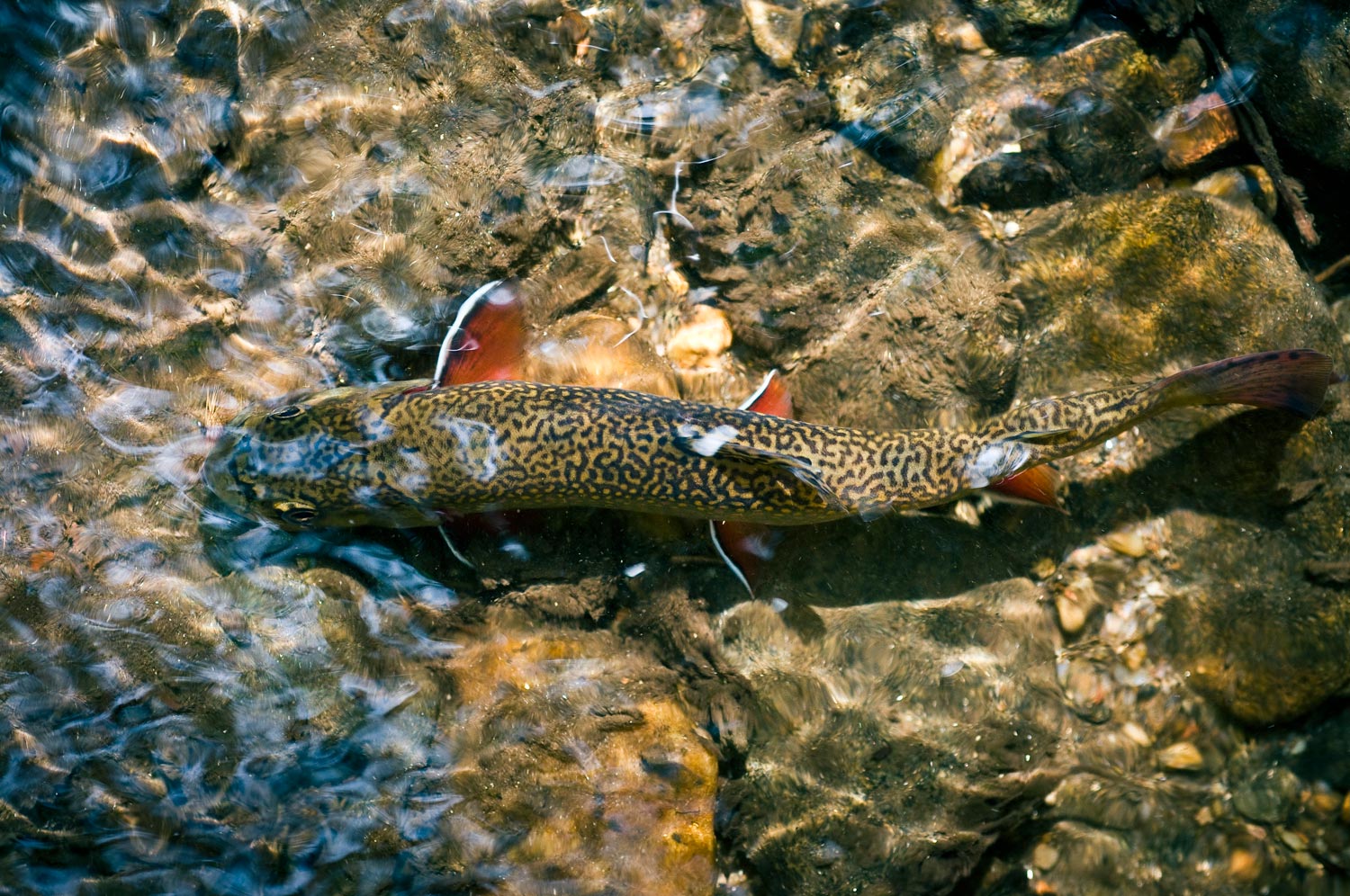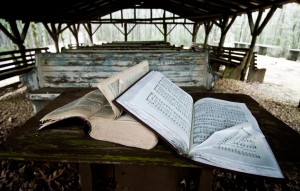“I thought you might like these,” my brother Tom holds out an old yellowed envelope. “I found them going through some of Pete’s things.”
William Starling Cahill, who preferred to be called Pete, was my Grandfather and the man who taught me to fly fish. He’s been gone for many years now but from time to time little gems that he left behind will turn up. My brother now lives in Pete’s old house which puts him in a good position to uncover relics.
I open the envelope and into my hand spill two feathers, dark down one edge and bright yellow along the other. “Ooooohh,” I exclaim and catch Tom’s eye, “Unobtainium.”
Yellowhammer is what we call them here in the south. The Yellow Shafted Flicker, a delicate little woodpecker who’s hammering used to echo off the hills of the Southern Appalachians. He’s almost completely silent now, shotgunned to the brink of extinction. Just having those two little feathers now could land me in jail. The Yellowhammer is heavily protected, now that it’s pretty much too late.
Yellowhammer is what we call the fly too. The one that’s tied from those feathers. It’s a wild, buggy looking thing. You wouldn’t expect a trout to eat it, but they do, like there’s no tomorrow. It’s a pattern as old as the little abandoned country church I pass on the gravel mountain road that leads to the stream I don’t tell anyone about. It’s as old as the graves there in the church yard and just as forgotten, but I still fish it.
It’s the perfect fly to catch Southern Appalachian Brook Trout. The Brookie, or Speck as they used to call them, is our only native trout. Forced south from New England by the ice age long before there was an England, new or old. When the ice retreated, like lots of folks who visit the south, the brookies stayed. They evolved, adapted to their new home and, like the Scotts and Irishmen who came to these mountains, they ended up just a little different from their northern cousins.
They are as scarce as the yellowhammer now, but with none of the protection. The old folks tell stories about catching them sixteen inches long in the same streams where today an eight inch fish is something to brag about. Come to think of it, the old man who told me that story is gone now too.
Go to one of those fancy sushi places in town and have a look around the saltwater aquarium. You won’t find a fish that compares to them. Persimmon orange and hemlock green, the gold of autumn grain, blood red spots with halos as blue as October skies. Black mouths and on every fin a crisp white edge from Gods own pallet knife. They are gem stones lost in the stream. They are swimming jewelry.
If you want to see them you have to go like a penitent, on hands and knees through briars and rhododendron. You have to clean spider webs from your ears and dirt from under your nails. You have to climb and hike and crawl to them. You have to climb the waterfalls that the rainbows and browns can’t pass. You have to hike farther than the bait fisherman will go, with their bread bags ready to stuff full of trout. You have to crawl through the thicket at the end of the trail. That’s where they live. That’s the only place left for them.
If you’re willing to make that trip, get that far from town, that far back up in the woods, that far from your TV, and you PC, and your SUV, that far into Appalachia, you might find them. While your there you might see a yellowhammer. You might see me too, and you might see Pete. At least, that’s where I find him.
Louis Cahill Gink & Gasoline www.ginkandgasoline.com hookups@ginkandgasoline.com Sign Up For Our Weekly Newsletter!



A beautiful vignette, Louis. Thank you!
Thanks Mike!
Well done, I was just telling a fishing buddy I need to figure out how to catch my first southern brookie this spring.
Thanks Roy. You’ll get him man. Just keep walking upstream.
This read went great with my cup of coffee this morning. I’ve been thinking of these guys and how I can’t wait to get back to that “far off place” that I found them last year. Some of the most gorgeous brookies I’ve seen in Ga.
Thanks Justin. My buddies and I have been talking about that same thing lately.
absolute perfection in motion, the fish, the fly, the bird and the history, we need these stories of our Grandfather’s~ whether it is of the Brook Trout, the Grayling, or the elusive Hog Johnson Unicorn of our dreams. I hope you catch your 15″ Appalachian Speck. Tight Lines,
Koz
Thanks Brian! If I catch that fish I’m buying you a beer.
Nicely written (and great photos as always). Thanks for sharing, Louis.
Thanks Chris!
Great short story, and well written. This is why I visit your site.
Thanks Michael! That’s what I like hearing.
Well said Louis
Thanks Cat!
Beautiful prose. I especially liked “they are like swimming jewelry.”
Thanks Josh! I’ve been nursing that phrase for a while.
I really need to clean that basement out 🙂
Maybe I should help you! I think there’s a nice scooter or two down there.
Superb!
Thanks Jeff. Glad you enjoyed it.
Great Story. I too have hiked way back in somewhere like what you wrote about here. You have captured the journey to these remote places very well. It is a blessing to me that we can still hike into the lovely, wild places to see and catch lovely, wild, beautiful things
Thanks Man! Blessed we are.
Really nice writing, Louis. Great stuff!
Thanks Jay!
Pingback: Yellowhammers and Specks | Fly Fishing | Gink and Gasoline | How to Fly Fish | Trout Fishing | Fly Tying - FishingStore
Over 50 years ago, I used to gather the feathers to make a Yallerhammer. Take a primary wing feather, split it down the middle of the shaft and palmer it onto the hook with a small tail. Simple and effective. I used to also fish them behind a small Colorado spinning blade.
Today, you can dye Dove feathers yellow and produce a a copy of the original Yallerhammer.
One of the most beautiful descriptions of a brook trout I’ve read in my 45 years of flyfishing.
Nice article, Louis. I’ve been blessed to have caught a 2lb. “Monster”, a fat male with a huge head, and a slim female fall colored 16 incher in my past. Both were caught in the Adirondacks of northern NY. I love to fish there in the fall, with the trees, towering mountains,
and brookies in full Autumn color.
I used to fish the Chateaugay (below cook’s Bridge), the saranac and occasionally the Chazy. Great times in the 1960s and 1970s and even 1980s. I once caught a 16 incher on the Chateaugay too when I brought my girl friend (now my wife) along for the ride. An old fishing buddy of mine and I re-visited our chateaugay river in 2018 (he passed away in late 2018). Just thinking of this place brings tears to my eyes. We used to go into town and eat at Mills Restaurant and the halfway restaurant on the way down to Chateaugay lake.
We saw 2 friends getting ready to fly fish at cooke’s bridge (just like us).